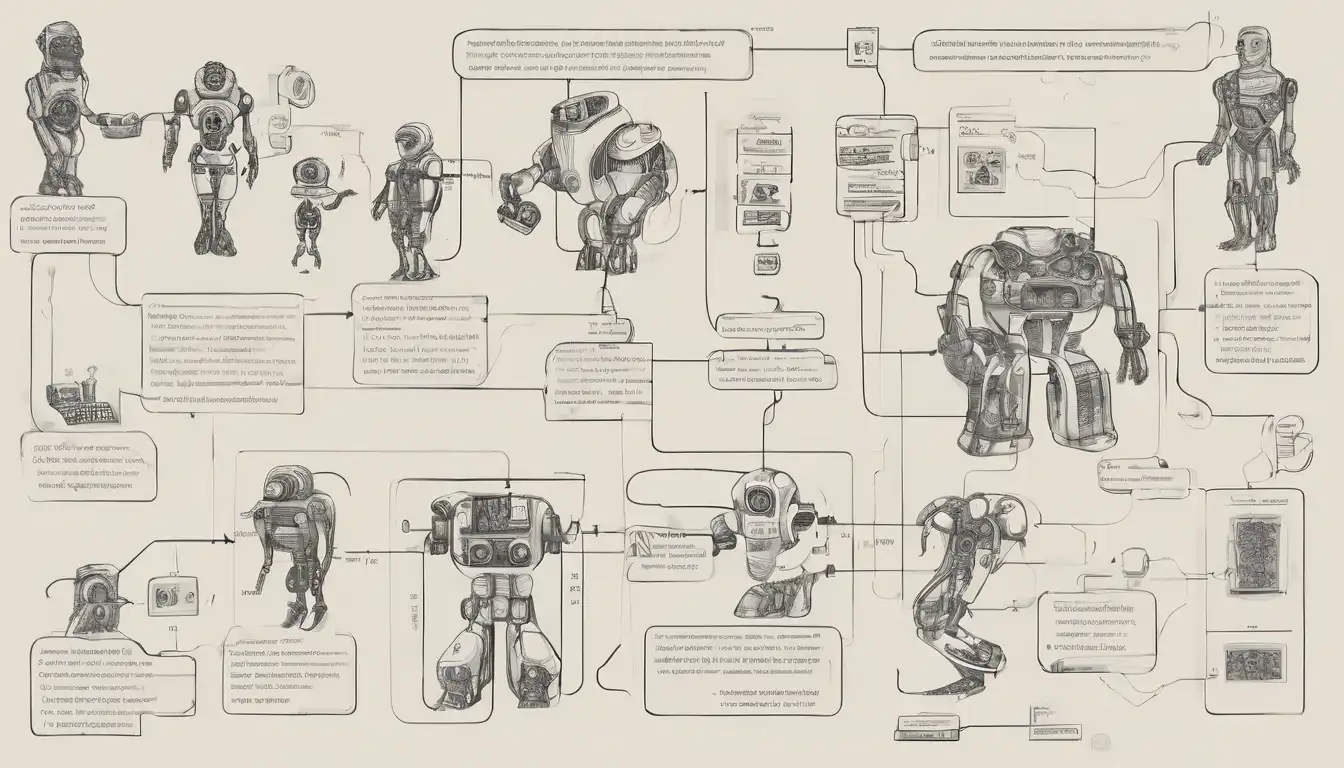Essential Machine Learning Algorithms Every Developer Must Master
Machine learning has revolutionized how developers approach problem-solving, enabling applications to learn from data and make intelligent decisions. As a developer, understanding core machine learning algorithms is no longer optional—it's essential for staying competitive in today's tech landscape. This comprehensive guide covers the fundamental algorithms that form the backbone of modern AI applications.
Why Machine Learning Matters for Developers
Machine learning algorithms empower developers to create systems that improve automatically through experience. From recommendation engines to fraud detection systems, these algorithms drive innovation across industries. Mastering these tools allows developers to build more intelligent, efficient, and scalable applications that adapt to user behavior and changing data patterns.
Supervised Learning Algorithms
Linear Regression
Linear regression is often the first algorithm developers encounter when entering the machine learning space. This simple yet powerful algorithm models the relationship between a dependent variable and one or more independent variables. It's particularly useful for predicting continuous outcomes, such as housing prices or sales forecasts. The algorithm works by finding the best-fit line through data points, minimizing the sum of squared errors.
Developers commonly use linear regression for:
- Predictive analytics and forecasting
- Risk assessment in financial applications
- Trend analysis in business intelligence
Logistic Regression
Despite its name, logistic regression is used for classification problems rather than regression. This algorithm estimates the probability that an instance belongs to a particular class, making it ideal for binary classification tasks. From spam detection to medical diagnosis, logistic regression provides a solid foundation for many real-world applications.
Key advantages include:
- Computational efficiency
- Easy interpretation of results
- Strong performance on linearly separable data
Decision Trees
Decision trees mimic human decision-making processes by breaking down complex decisions into simpler ones. These algorithms create a tree-like model of decisions and their possible consequences, making them highly interpretable. Developers appreciate decision trees for their transparency and ease of implementation.
Common applications include:
- Customer segmentation
- Credit scoring
- Medical diagnosis systems
Unsupervised Learning Algorithms
K-Means Clustering
K-means clustering is arguably the most popular unsupervised learning algorithm. It partitions data into K distinct clusters based on feature similarity, helping developers discover hidden patterns in unlabeled data. This algorithm is particularly valuable for market segmentation, image compression, and anomaly detection.
Implementation considerations:
- Choosing the optimal number of clusters (K)
- Handling different data scales
- Dealing with non-spherical cluster shapes
Principal Component Analysis (PCA)
PCA is a dimensionality reduction technique that transforms high-dimensional data into a lower-dimensional space while preserving as much variance as possible. Developers use PCA to simplify complex datasets, reduce computational requirements, and improve model performance by eliminating redundant features.
Typical use cases include:
- Data visualization
- Noise reduction
- Feature engineering for other algorithms
Advanced Algorithms for Complex Problems
Support Vector Machines (SVM)
SVMs are powerful classifiers that work by finding the optimal hyperplane that separates classes in high-dimensional space. These algorithms excel at handling complex, non-linear relationships through kernel tricks, making them suitable for tasks like text classification and image recognition.
Key features include:
- Effective in high-dimensional spaces
- Memory efficiency
- Versatility through different kernel functions
Random Forests
Random forests address some limitations of single decision trees by combining multiple trees to create a more robust and accurate model. This ensemble method reduces overfitting and improves generalization, making it one of the most reliable algorithms for classification and regression tasks.
Advantages for developers:
- Handles missing values well
- Provides feature importance scores
- Works well with both categorical and numerical data
Neural Networks
Neural networks have revolutionized machine learning with their ability to learn complex patterns from large datasets. While more computationally intensive than traditional algorithms, neural networks power cutting-edge applications in computer vision, natural language processing, and speech recognition.
Essential concepts include:
- Layers and neurons
- Activation functions
- Backpropagation for training
Choosing the Right Algorithm
Selecting the appropriate machine learning algorithm depends on several factors, including the nature of your data, problem type, and performance requirements. Consider the following guidelines:
- Start simple with linear or logistic regression for well-defined problems
- Use decision trees or random forests for interpretable models
- Choose neural networks for complex pattern recognition tasks
- Employ clustering algorithms for exploratory data analysis
Implementation Best Practices
Successful machine learning implementation requires more than just algorithm knowledge. Developers should focus on:
- Data preprocessing and cleaning
- Feature engineering and selection
- Model evaluation and validation
- Continuous monitoring and retraining
Proper implementation ensures that your machine learning models deliver accurate, reliable results in production environments. Remember that algorithm performance often depends more on data quality and feature engineering than on the algorithm itself.
Future Trends and Considerations
The machine learning landscape continues to evolve rapidly. Developers should stay informed about emerging trends such as automated machine learning (AutoML), federated learning, and explainable AI. These advancements are making machine learning more accessible while addressing important concerns around privacy and interpretability.
As you continue your machine learning journey, remember that mastering these fundamental algorithms provides a strong foundation for tackling more advanced concepts. The ability to select, implement, and optimize these algorithms will remain a valuable skill for developers across all domains.
For more insights on implementing these algorithms in real-world scenarios, check out our guide on machine learning implementation best practices and explore our AI development tools resource center.
